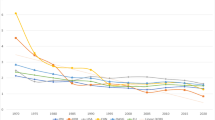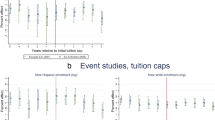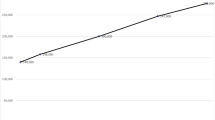Abstract
In his classic essay, “Problems in the Transition from Elite to Mass Higher Education,” Martin Trow observed that in every advanced society, the problems of higher education—including ostensibly the ability to deliver a liberal education—inhere in growth. With growth, the character of institutions changes. University attendance increasingly carries varied meanings for students: first conceived as a privilege, then as a right, and finally as an obligation. “Massification” is connoted with an optimism about access to higher education and about the democratization of society. Yet, it is prone to propagating structural and cultural conditions that are antithetical to an authentically rigorous, text-based, discussion-centered, writing-intensive liberal education where students and faculty convene on behalf of education for the mind. The emergence of this problem centers on the seemingly irreconcilable triad of size, quality, and cost; that is, how liberal education is made possible and cost-effective on an increasingly large scale. The solutions suggested here are threefold: the institutionalization of proper information about universities, their purposes and functions; the practice of proper matching of applicants with institutions in institutionally differentiated higher education systems; and the standardization of proper understanding of expectations about what it means to be a bona-fide student in an institution of higher education.
Similar content being viewed by others
Notes
I adhere to a distinction between general and liberal education, which are sometimes used synonymously. General education refers to a part of an undergraduate program. It is also the antithesis of specialized education and is often set in distinction from education in disciplines or specific fields. Liberal education writ large includes the totality of an undergraduate curriculum, including general education, a major field of study, electives, and even non-classroom activity (Boyer and Levine 1981, 32). Liberal education is distinct from the “liberal arts.” The artes liberales arose in the Roman Republic to address the cultivation of oratory skills, particularly for legal and political purposes (Levine 2006, 15). The liberal arts are often associated with specific fields. At their onset, the artes liberales corresponded to the Trivium of grammar, logic, and rhetoric, followed by the Quadrivium of arithmetic, geometry, music, and astronomy (Marber and Araya 2017, xiii). Despite their European origins, liberal arts traditions gave way in European universities to specialized “reading” in a course of study involving a single subject, such as math or law. A broad multidisciplinary configuration of the liberal arts is most closely associated with the development of higher education in the USA, beginning with the Colonial colleges (Marber and Araya 2017). Today the “liberal arts” are most closely associated with the humanities and, to a lesser extent, the social sciences in the American university. In usage, the liberal arts, similar to liberal education, often represent not only fields but also an educational philosophy that emphasizes critical thinking, discursive reasoning, and rational judgment. In my use of the term, liberal education is not restricted to modern-day fields of the liberal arts, though, under the best circumstances, draws heavily on them, or on syntheses of them, as evident in some formats of general education.
For excellent historical encapsulations of liberal education, see Axelrod (2002, esp. chapter 1) and Levine (2006).
The pervasive phenomenon of college attrition is explained largely by a failure of students’ academic and/or social integration in higher education institutions (Kirp 2019; Tinto 1993) which, by turn, operates partly as a function of preparedness for those institutions (viz., awareness about the purposes of higher education enrollment and one’s compatibility with those purposes).
Further Reading
Armstrong, Elizabeth A. and Laura T. Hamilton. 2013. Paying for the Party: How College Maintains Inequality. Cambridge, MA: Harvard University Press.
Arum, Richard and Josipa Roksa. 2011. Academically Adrift: Limited Learning on College Campuses. Chicago: University of Chicago Press.
Axelrod, Paul. 2002. Values in Conflict: The University, the Marketplace, and the Trials of Liberal Education. Montreal and Kingston: McGill-Queen’s University Press.
Arum, Richard, Josipa Roksa, Jacqueline Cruz, and Blake Silver. 2018. “Student Experiences in College.” In Barbara Schneider (ed.), Handbook of the Sociology of Education in the 21st Century, 385–403. Dordrecht: Springer.
Babcock, Phillip S. and Mindy Marks. 2011. “The Falling Time Cost of College: Evidence from Half a Century of Time Use Data.” Review of Economics and Statistics 93(2):468–478.
Boyer, Ernest L. and Arthur Levine. 1981. A Quest for Common Learning: The Aims of General Education. Washington, D.C.: Carnegie Foundation for the Advancement of Teaching.
Brint, Steven and Allison M. Cantwell. 2010. “Undergraduate Time Use and Academic Outcomes: Results from the University of California Undergraduate Experience Survey, 2006.” Teachers College Record 112(9):2441–2470.
Cantwell, Brendan. 2018. “Broad Access and Steep Stratification in the First Mass System: High Participation Higher Education in the United States of America.” In Brendan Cantwell, Simon Marginson, and Anna Smolentseva (eds.), High Participation Systems of Higher Education, 227–265. Oxford: Oxford University Press.
Charles, Camille Z., Mary J. Fischer, Margarita A. Mooney, and Douglas S. Massey. 2009. Taming the River: Negotiating the Academic, Financial, and Social Currents in Selective Colleges and Universities. Princeton: Princeton University Press.
Coleman, James S. 1969. Foreword to Bernard C. Rosen, Harry J. Crockett, Jr., and Clyde Z. Nunn (eds.), Achievement in American Society, v-vi. Cambridge, MA: Schenkman.
Collini, Stefan. 2017. Speaking of Universities. London: Verso.
Delbanco, Andrew. 2012. College: What it Was, Is, and Should Be. Princeton: Princeton University Press.
Deresiewicz, William. 2014. Excellent Sheep: The Miseducation of the American Elite and the Way to a Meaningful Life. New York: Free Press.
Ferrall, Victor E., Jr. 2011. Liberal Arts at the Brink. Cambridge, MA: Harvard University Press.
Geiger, Roger L. 2015. The History of American Higher Education: Learning and Culture From the Founding to World War II. Princeton: Princeton University Press.
Grigsby, Mary. 2009. College Life Though the Eyes of Students. Albany: State University of New York Press.
Hermanowicz, Joseph C. 2019. “The Degradation of Merit.” Society 56(4):340–347.
Hersh, Richard H. and John Merrow. 2005. Declining by Degrees: Higher Education at Risk. New York: Palgrave Macmillan.
Kirp, David. 2019. The College Dropout Scandal. New York: Oxford University Press.
Kuh, George. 2003. “What Are We Learning About Student Engagement.” Change 35:28.
Levine, Donald N. 2006. Powers of the Mind: The Reinvention of Liberal Learning in America. Chicago: University of Chicago Press.
Marber, Peter and Daniel Araya (eds.). 2017. The Evolution of Liberal Arts in the Global Age. New York: Routledge.
Marginson, Simon. 2018. “High Participation Systems of Higher Education.” In Brendan Cantwell, Simon Marginson, and Anna Smolentseva (eds.), High Participation Systems of Higher Education, 3–38. Oxford: Oxford University Press.
Neem, Johann N. 2019a. What’s the Point of College? Baltimore: Johns Hopkins University Press.
Neem, Johann N. 2019b. “Abolish the Business Major! Anti-Intellectual Degree Programs have not place in Colleges.” Chronicle of Higher Education, August 19.
Nelson, Christopher B. 2017. “The Promise of Liberal Education in the Global Age.” In Peter Marber and Daniel Araya (eds.), The Evolution of Liberal Arts in the Global Age, 203–212. New York: Routledge.
Sperber, Murray. 2005. “How Undergraduate Education Became College Lite—And a Personal Apology.” In Richard H. Hersh and John Merrow (eds.), Declining by Degrees: Higher Education at Risk, 131–144. New York: Palgrave Macmillan.
Sperber, Murray. 2000. Beer and Circus: How Big-Time College Sports is Crippling Undergraduate Education. New York: Henry Holt.
Tinto, Vincent. 1993. Leaving College: Rethinking the Causes and Cures of Student Attrition. Chicago: University of Chicago Press.
Trow, Martin. [1976] 2010. “Elite Higher Education: An Endangered Species?” In Michael Burrage (ed.), Martin Trow: Twentieth-Century Higher Education—Elite to Mass to Universal, 145–172. Baltimore: Johns Hopkins University Press.
Trow, Martin. [1974 ] 2010. “Problems in the Transition from Elite to Mass Higher Education.” In Michael Burrage (ed.), Martin Trow: Twentieth-Century Higher Education—Elite to Mass to Universal, 88–142. Baltimore: Johns Hopkins University Press.
Author information
Authors and Affiliations
Corresponding author
Additional information
Publisher’s Note
Springer Nature remains neutral with regard to jurisdictional claims in published maps and institutional affiliations.
Rights and permissions
About this article
Cite this article
Hermanowicz, J.C. The Fate (and Possible Future) of Liberal Learning: Lessons from Mass Higher Education in the USA. Soc 58, 44–53 (2021). https://doi.org/10.1007/s12115-021-00557-z
Published:
Issue Date:
DOI: https://doi.org/10.1007/s12115-021-00557-z




